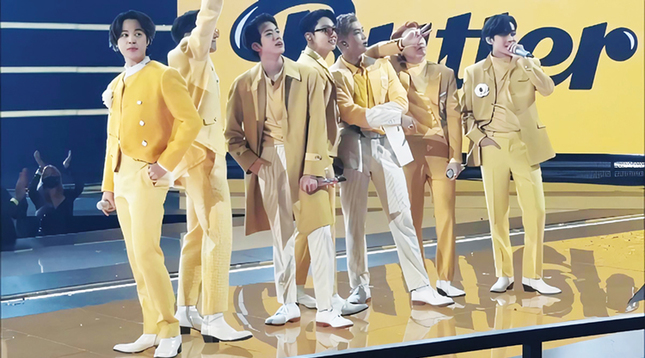
Carolin Von Petzholdt/Wikimedia Commons
BTS performing their hit single “Butter” at the 2021 American Music Awards.
View full image

Carolin Von Petzholdt/Wikimedia Commons
BTS performing their hit single “Butter” at the 2021 American Music Awards.
View full image

To hear sociologist Grace Kao’s intro to K-pop playlist, scan the QR code.
View full image

To hear sociologist Grace Kao’s intro to K-pop playlist, scan the QR code.
View full image
When COVID-19 was declared a global pandemic in March 2020, every industry pivoted. Office workers logged in from home. Restaurant owners experimented with food delivery. And musicians moved concerts online—perhaps none as successfully as the K-pop group BTS. Their online performances were seen by millions of viewers worldwide, and BTS raked in $131 million from just three sets, earning more than the 31 stadium performances they’d put on in 2019.
In a new study, Yale sociologist Grace Kao and Ohio State University’s Wonseok Lee have taken a closer look. Could the BTS online concerts really replicate an in-person experience? And what did their success say about K-pop’s popularity in general?
Kao first saw BTS perform on Saturday Night Live in 2019. “I barely knew anything about them,” she says. “But I knew in my gut, as a sociologist, that they were really important.” In 2020, their song “Dynamite” became the first K-pop song to hit number one on Billboard’s Hot 100 singles chart. Over the following 13 months, they had five more number-one songs—making them, as Kao and Lee have written, the “fastest group to achieve this feat since the Beatles” in 1964. Given the “monopoly on cultural production” held by Western countries, Kao says, “it was hard for anyone to predict this explosion.”
K-pop’s rise, notes Kao, is part of the “Korean wave.” Other Korean art forms, like K-drama, have also become popular. The pandemic played a role, as well: BTS regularly posted full-length concert videos on YouTube, making their content available for free for people stuck at home.
Perhaps most important is the way BTS interacts with its fans, who are dubbed ARMY. Their members often open up about personal challenges, and even cry on camera. “They’re not trying to be macho,” Kao says. “That’s appealing to a lot of fans all over the world.” Moreover, although other musicians might go partying after a show, BTS generally returns to their hotel rooms to do a “live” with fans. In concerts, too, the fans play a pivotal role. “Fan chants” are as much a part of the music as the lyrics, and the fans wave light sticks while concert staff control the colors, creating patterns and spectacles of light.
Kao and Lee note that BTS tried to bring this aspect online as much as possible, even projecting some preselected fans onto the screen and incorporating cheers. “It’s not the same,” says Kao. Still, online performances seem like they’re here to stay. Although Kao accepts that it’s impossible to predict, she hopes that K-pop is here to stay, too.
 loading
loading